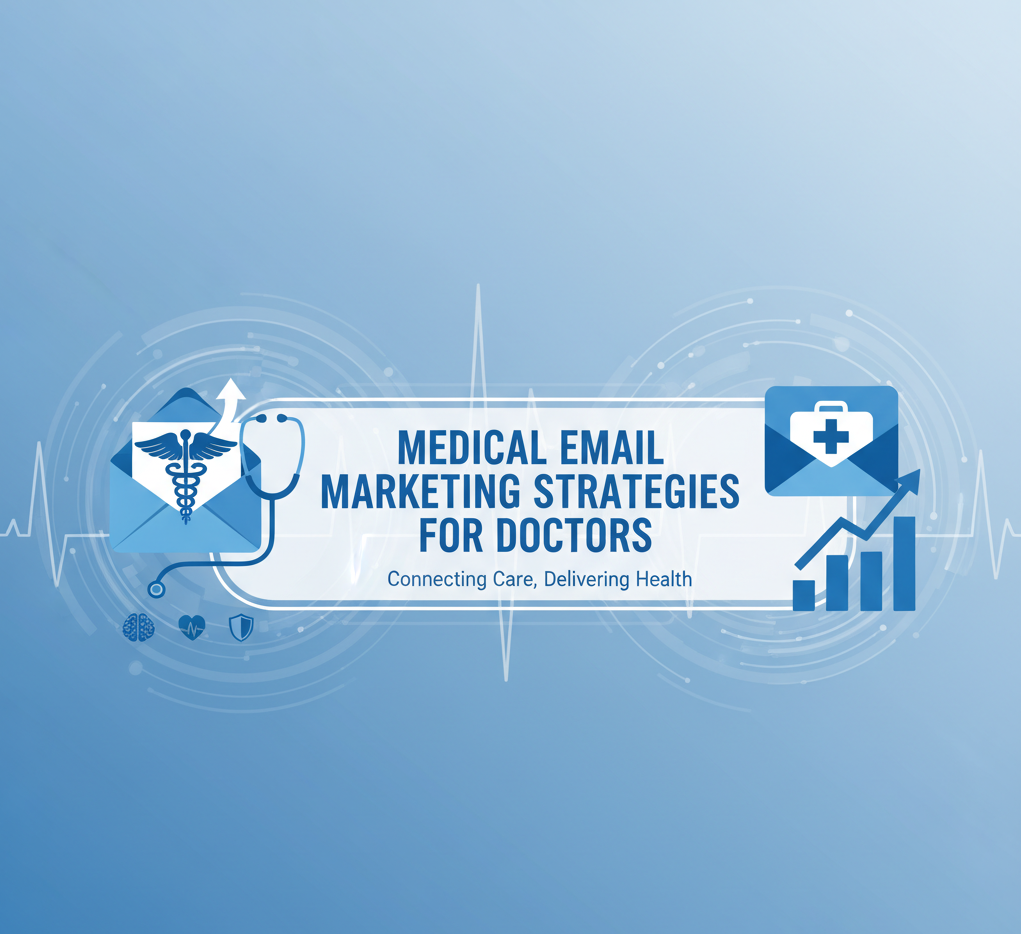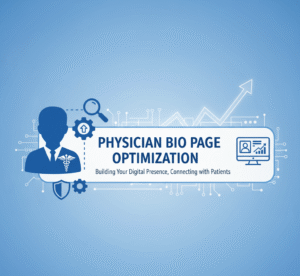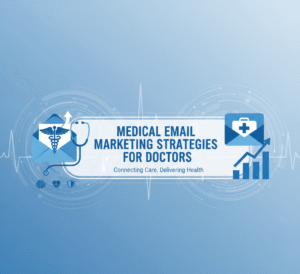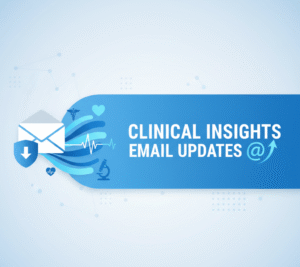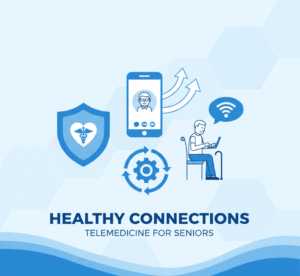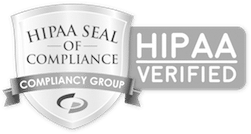“Transform your practice with expert medical email marketing strategies for Doctors that use list segmentation and valuable health content to build patient trust, loyalty, and engagement.”
In today’s connected world, the relationship between a doctor and a patient extends far beyond the four walls of an examination room. Your patients are online. They research symptoms on their phones, read health articles during their lunch breaks, and expect a level of communication from their healthcare providers that matches the digital convenience they experience in every other part of their lives. Yet, for many physicians, the idea of reaching out to patients via email feels like a step into a minefield. The fear is palpable: “Will I sound like a car salesman?” “Will I annoy my patients?” “Will I be… spammy?”
This hesitation is entirely understandable. Your reputation is built on trust, authority, and professionalism. The last thing you want to do is cheapen that relationship with generic, pushy marketing messages.
But here’s the crucial distinction: there is a vast difference between thoughtless marketing and meaningful communication. Effective email marketing for doctors isn’t about selling a service; it’s about extending your care. It’s about becoming a consistent, reliable source of health information in your patients’ lives, even between appointments. It’s a cornerstone of modern patient communication strategies and one of the most powerful tools for building lasting patient relationships.
This guide will show you how to implement medical email marketing strategies for Doctors that feel authentic, provide genuine value, and strengthen patient loyalty. We will explore how to deliver the right message to the right person at the right time, all while upholding the highest standards of medical ethics and professionalism. Forget the spam. It’s time to start a conversation.
The Modern Patient Expects More: Why Email is No Longer Optional
Think about the typical patient journey. A person may have an annual check-up, receive advice, and then might not see you again for another year. What happens in that 364-day gap? Life happens. Health questions arise. Misinformation from the internet creeps in. The connection forged during the visit begins to fade. Without consistent communication, you risk becoming a reactive contact rather than a proactive partner in their health.
This is the gap that strategic email marketing fills. It acts as a bridge, maintaining the connection and reinforcing your role as their trusted health advisor. When a patient receives a helpful email from your practice—not a sales pitch, but a genuinely beneficial piece of advice—it does several things simultaneously:
- It Reinforces Trust: You demonstrate that you care about their well-being beyond a billable office visit.
- It Boosts Your Authority: You become their go-to source for credible health information, counteracting the dubious advice they might find online.
- It Encourages Proactive Health Management: A timely reminder about flu shots or an article on seasonal allergies prompts patients to take action for their health.
- It Keeps Your Practice Top-of-Mind: When a non-urgent health need does arise, a patient who has been hearing from you regularly is far more likely to schedule an appointment with your practice than to search for a new doctor.
The goal of doctor email marketing is not to flood inboxes. The goal is to deliver value so consistently that your patients eagerly anticipate hearing from you.
The Cardinal Sin: How to Avoid Being Spammy
Let’s address the biggest fear head-on. What truly separates a valuable email from a spammy one in a healthcare context? It comes down to intent and relevance.
Spammy healthcare emails are:
- Impersonal: Addressed to “Dear Patient” with no consideration for their specific health needs.
- Sales-Driven: Constantly pushing high-cost elective procedures or supplements. Every email has a hard “buy now” feel.
- Irrelevant: Sending information about pediatric care to a retired, 68-year-old patient.
- Too Frequent: Bombarding inboxes with daily or multiple weekly emails that offer little new information.
In contrast, valuable and engaging medical emails are:
- Patient-Centric: The content is created with the patient’s needs and questions in mind.
- Educational: The primary goal is to inform, educate, and empower patients to make informed decisions about their health and well-being.
- Relevant and Segmented: The content is tailored to specific patient groups based on their health profile.
- Professional and Consistent: The emails arrive on a predictable schedule (e.g., a monthly newsletter) and maintain a professional tone.
The fundamental mindset shift is this: Stop thinking of it as marketing. Start thinking of it as an extension of your patient education. The same advice you would give a patient in your office is the foundation for incredible email content. You just need a system to deliver it effectively.
The Bedrock of Your Strategy: HIPAA-Compliant List Building
Before sending a single email, you must address the legal and ethical framework of patient communication, specifically the Health Insurance Portability and Accountability Act (HIPAA). A misunderstanding here can have serious consequences.
It is crucial to understand the difference between transactional emails and marketing emails.
- Transactional/Healthcare Operations Emails: These are directly related to a patient’s care. Think appointment reminders, notifications that test results are ready, or billing information. These generally do not require special marketing consent as they are part of providing care.
- Marketing Emails: These are communications that promote a product or service. A monthly newsletter with health tips, announcements about a new cosmetic service, or even a general “Happy Holidays” message falls under this category.
For any email that can be considered marketing, you must obtain explicit, written authorization from your patients. You cannot simply take the email addresses from your patient files and add them to a marketing list.
Here’s how to build your email list the right way:
- Explicit Consent on Intake Forms: Add a separate, clearly worded, and optional checkbox on your patient intake forms. It should not be bundled with consent for treatment. For example:
- [ ] Yes, I would like to receive the [Your Practice Name] monthly health newsletter with wellness tips, practice updates, and educational articles. I understand I can unsubscribe at any time.
- Use a HIPAA-Compliant Email Service Provider (ESP): Do not send marketing emails from your Outlook or Gmail account. This is not secure or compliant. You need to use a professional ESP that will sign a Business Associate Agreement (BAA). A BAA is a legal contract that obligates the ESP to uphold HIPAA’s data protection standards. Reputable providers, such as Mailchimp (on specific plans) or Constant Contact, as well as specialized healthcare CRMs, offer BAAs.
- Make Unsubscribing Easy: Every single marketing email must have a clear and straightforward “Unsubscribe” link. This is required by law (CAN-SPAM Act) and is also a sign of a trustworthy sender. Do not require patients to jump through hoops to opt out.
Building your list compliantly may be slower, but it results in a list of patients who have actively chosen to hear from you. This is the foundation of engagement. They are already receptive to your message because they permitted you to send it.
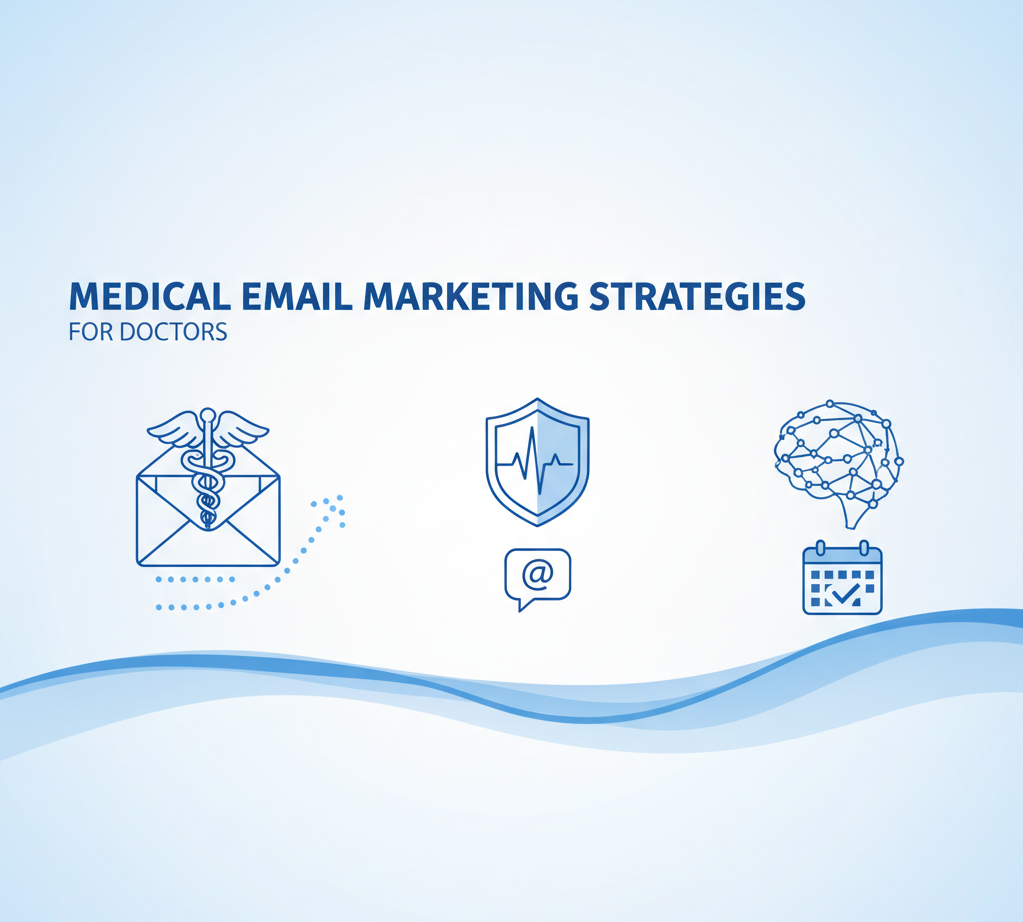
The Power of Precision: Segmenting Patient Lists for Maximum Relevance
This is where great medical email marketing transforms from a generic broadcast into a powerful communication tool. Sending the same email to every single patient is a recipe for low engagement and high unsubscribe rates. A 70-year-old patient managing hypertension has vastly different health concerns than a 30-year-old new mother. Segmenting patient lists enables you to send highly relevant content that resonates deeply with your audience.
Segmentation is the practice of dividing your main email list into smaller, more specific groups. Using data from your Patient Management System (in a compliant way), you can create segments that allow for incredibly personalized messaging.
Here are some of the most effective ways to segment your patient lists:
1. Segmentation by Condition or Diagnosis
This is the most powerful method. By grouping patients with similar health conditions, you can provide them with targeted educational content that directly applies to their lives.
- For Patients with Diabetes: Send emails about healthy recipes for blood sugar control, tips for proper foot care, articles explaining the A1C test, or news about new glucose monitoring technologies.
- For Patients with Hypertension: Share information on low-sodium diets, stress-reduction techniques such as mindfulness, and the importance of consistent exercise.
- For Pediatric Patients (sent to parents): Create separate lists based on the child’s age. Parents of infants need information on feeding schedules and sleep training. Parents of toddlers want to know about developmental milestones. Parents of school-aged children need reminders about sports physicals and vaccination schedules.
- For Cardiology Patients: Provide articles on heart-healthy fats, distinguishing signs of a heart attack from heartburn, and interviews with cardiac rehabilitation specialists.
This level of personalization shows you understand their specific health journey and are invested in helping them manage it.
2. Segmentation by Last Visit Date
This is a key tactic for patient retention email campaigns and promoting preventive care.
- The “Annual Check-Up” Reminder: Create a segment of patients who haven’t had an appointment in over 11 months. Send them a friendly, educational email (not just a demand to book) about the importance of preventative screening and annual wellness visits.
- The Post-Visit Follow-Up: A week after a visit, you can send an automated email with links to resources that expand on the topics discussed. For example, “It was great to see you last week. As we discussed, here is a helpful article from the American Heart Association on lowering your cholesterol.”
- The “We Miss You” Campaign: For patients who haven’t been in for over 18 months, a gentle re-engagement email can be a practical approach. It can highlight new services, introduce a new provider, or simply remind them that you’re there for their health needs.
3. Segmentation by Age and Demographics
Different age groups have distinct health priorities. Segmenting by age allows you to tailor your content to be relevant to their stage of life.
- Young Adults (20s-30s): Content could focus on mental health resources, sports injury prevention, sexual health, and the importance of establishing a primary care relationship.
- Middle-Aged Adults (40s-50s): Focus on preventative screenings (mammograms, colonoscopies), managing stress, maintaining a healthy weight, and perimenopause/menopause topics.
- Seniors (65+): Provide information on Medicare open enrollment, fall prevention strategies, bone density, managing multiple medications, and maintaining cognitive health.
4. Segmentation by Interest in Specific Services
This is especially useful for practices that offer elective procedures, such as dermatology, ophthalmology, or cosmetic surgery.
- If a patient has previously inquired about a service like LASIK or Botox, you can place them in a specific segment for follow-up.
- This segment can then receive more detailed information, such as FAQs about the procedure, patient testimonials (with explicit consent), or an invitation to an informational webinar. This avoids sending promotional material to patients who have no interest in these services.
Proper segmentation is the core of an effective, non-spammy strategy. It ensures that when your email lands in a patient’s inbox, their immediate reaction is, “Oh, this is for me.”
The Heart of the Matter: Creating Engaging Medical Content That Provides Real Value
Now that you know who you’re talking to, what do you actually say? This is where many practices get stuck. The key is to follow the 80/20 rule: 80% of your content should be purely educational and valuable, while only 20% should be promotional (such as announcing a new service or requesting an appointment). Your emails should feel less like an advertisement and more like a health journal from a trusted expert.
Here is a long list of value-driven email content ideas for your healthcare email campaigns:
Educational Content
- “How-To” Guides: “How to Properly Stretch to Avoid Lower Back Pain,” “How to Read a Nutrition Label for Heart Health.”
- Symptom Checkers: “Is It a Cold, the Flu, or COVID-19? A Guide to Your Symptoms.”
- Myth Debunking: “Busting 5 Common Myths About Sunscreen,” “The Truth About Gluten-Free Diets for Non-Celiacs.”
- Seasonal Health Primers: “Your Action Plan for Surviving Allergy Season,” “4 Ways to Boost Your Immunity This Winter.”
- Deep Dives into Conditions: An email series explaining a condition like asthma in simple, manageable parts—what it is, triggers, treatment options, etc.
Practice and Community News
- Introduce New Staff: “Meet Our New Nurse Practitioner, Jane Doe!” Include a photo and a short, friendly bio. This builds familiarity and trust.
- Announce New Technology or Services: “We Now Offer 3D Mammography: Here’s Why It Matters,” “Introducing Convenient Telehealth Appointments.” Explain the benefit to the patient.
- Share Practice Updates: “Our New Extended Hours on Wednesdays,” “Important Information About Our Holiday Schedule.”
- Community Involvement: “Join Our Team for the American Heart Association Charity Walk!” This shows you are a part of the local community.
Preventive Care and Wellness
- Health Awareness Month Content: Use national health observances as a content calendar. During Breast Cancer Awareness Month in October, consider sending an email highlighting the importance of self-exams and mammograms.
- Healthy Recipes: Partner with a local nutritionist or share your own heart-healthy or diabetic-friendly recipes.
- Mental Wellness Tips: “5 Mindfulness Exercises to Reduce Stress,” “The Importance of Quality Sleep and How to Get It.”
- Fitness Challenges: A simple “Walk 10,000 Steps a Day for a Week” challenge can be a fun way to engage patients.
The Anatomy of an Effective Healthcare Email
- Subject Line: Make it clear, compelling, and free of spam triggers.
- Good: “A Doctor’s Guide to a Healthier Holiday Season”
- Bad: “💥 HUGE SAVINGS ON YOUR NEXT VISIT – OPEN NOW! 💥”
- Personalization: Start with the patient’s first name. “Hi Sarah,” is much warmer than “Dear Patient.”
- Clear, Concise Body: Use short sentences and paragraphs. Use bullet points and bold text to make it easy to scan. Write in a professional but approachable tone, just as you would speak to a patient.
- A Single, Clear Call-to-Action (CTA): What is the one thing you want the reader to do? “Read more on our blog,” “Watch the video,” or “Schedule your annual physical.” Don’t overwhelm them with multiple competing requests.
- Professional Signature: Include your practice’s name, address, phone number, and a link to your website.
Consistency is key. Whether you opt for a monthly newsletter or a bi-weekly health tip, stick to a consistent schedule. Patients will come to expect and even look forward to your communications.
Bringing It All Together: The InvigoMedia Approach
We have covered a lot of ground: the importance of patient-centric communication, the critical nature of HIPAA compliance, the power of segmentation, and the art of creating valuable content. Executing these medical email marketing strategies effectively for doctors requires a combination of medical expertise, marketing skills, and technical proficiency. It’s a significant undertaking for a busy practice to manage independently.
This is where InvigoMedia steps in. We are not a generic marketing agency that happens to have a few healthcare clients. We are specialists in healthcare communication. We understand the unique challenges and ethical considerations of marketing a medical practice. Our entire approach is built around fostering trust and building lasting patient relationships, not just generating clicks.
Here’s how our strategic approach helps doctors engage their patient base:
- Strategy First, Execution Second: We start with a thorough examination of your practice. Who are your patients? What are their primary health concerns? What are your practice’s growth goals? We develop a custom email strategy that aligns with your specific patient demographics and clinical specialties.
- HIPAA-Compliant Foundation: We handle the technical setup from day one, ensuring you are using a HIPAA-compliant email platform with a signed BAA. We work with you to create compliant consent forms and list-building processes, giving you complete peace of mind.
- Intelligent Segmentation: We don’t do email blasts. We work with you to analyze your patient data (in a secure and compliant manner) to create meaningful segments, as discussed—by condition, age, last visit, and other relevant factors. This ensures every message is as relevant as possible.
- Expert Content Creation: Our team comprises writers skilled in translating complex medical topics into explicit, engaging, and empathetic content. We work with you to develop an editorial calendar of engaging medical content that positions you as a leading authority and a caring provider. We handle the writing, design, and scheduling, freeing you to focus on what you do best: caring for patients.
- Measurable Results: We track key metrics like open rates, click-through rates, and appointment requests generated from email campaigns. This data enables us to continually refine our strategy, focusing on what works to enhance patient engagement and retention over time.
With InvigoMedia as your partner, email marketing becomes one of the most powerful tools in your patient engagement toolkit, no longer a daunting task. It’s about building a community around your practice, fostering loyalty, and ultimately, encouraging your patients to live healthier, more informed lives.
Ready to transform your patient communication? Contact InvigoMedia today for a complimentary consultation, and let’s build a strategy that works for you.
Frequently Asked Questions (FAQs)
1. How often should I be emailing my patients? Won’t they get annoyed?
The key is quality over quantity. For most practices, a monthly newsletter is an excellent starting point. It’s frequent enough to stay top-of-mind but not so frequent that it feels intrusive. You could supplement this with occasional, highly targeted emails for specific segments (e.g., a flu shot reminder in the fall). As long as every email provides genuine value, your patients will welcome it.
2. Is email marketing really safe and HIPAA compliant?
Absolutely, provided you follow the correct procedures. The two most critical elements are: 1) Obtaining explicit, opt-in consent from patients for marketing communications, and 2) Using a professional email marketing platform that will sign a Business Associate Agreement (BAA). Never use a standard email client, such as Gmail or Outlook, for mass emails.
3. What kind of results can I realistically expect from email marketing?
The results are multifaceted. You can expect to see higher patient retention rates, as you’re actively building a relationship between visits. You’ll likely see an increase in bookings for preventative care and screenings promoted in your emails. Over time, you’ll also see an increase in your practice’s authority and reputation in the community as you become a trusted source of health information.
4. I’m a solo practitioner with a small team. Can I do this myself?
You certainly can, but it requires a significant investment of time and a specific skill set. You need time for strategy, writing content, designing the email, segmenting lists, and analyzing results. Many practices find that outsourcing to a specialist agency like InvigoMedia is more cost-effective, as it allows them and their staff to focus 100% on patient care while the marketing engine runs professionally in the background.
5. What happens if a lot of people unsubscribe? Should I be worried?
Don’t panic! Some unsubscribes are a normal and healthy part of email marketing. It means you are filtering your list down to the patients who are most engaged and genuinely want to hear from you. A high unsubscribe rate on a specific email may be a sign that the content wasn’t relevant, providing valuable feedback for improving your next campaign.

